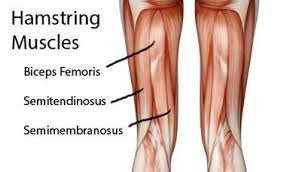ABOUT Hamstring tendinopathy:
Hamstring tendinopathy, unlike hamstring tears, occur over a period of time and are classified as an overuse injury. They do not involve any tearing of the muscle or tendon fibres, rather it is a progressive weakening of the tendon resulting in an inability to absorb the force output by the hamstring muscles. Most overuse injuries result from a change in activity load which can occur weeks to months prior to the onset of pain.
SYMPTOMS:
Symptoms present as localised pain at the top of the hamstring where it attaches onto the pelvis on the ischial tuberosity. Pain usually reduces after a few minutes of activity but becomes worse afterwards. Aggravating factors usually include squatting, lunging and sitting for prolonged periods, especially on harder surfaces. Slow walking, standing and lying are rarely painful. There may also be stiffness felt particularly in the morning.
DIFFERENTIAL DIAGNOSIS:
- Sciatic nerve irritation at the piriformis muscle or near the ischial tuberosity
- Ischiofemoral impingement
- Apophysitis among adolescents
- Deep gluteal muscle tear
- Posterior pubic or ischial ramus stress fracture
- Partial or complete rupture of the proximal hamstring tendon
CAUSES:
Hamstring tendinopathy most commonly occurs from a repetitive action such as running. If a runner changes the distance they run, their running intensity, the shoes they wear or even the surface they run on it results in a change in load through the hamstring tendons. If this change in load continues and the hamstring tendon is not allowed enough rest time between bouts of activity then the tendon fibres become progressively weaker.
ANATOMY AND BIOMECHANICS:
The hamstring is made of three muscles; bicep femoris, semitendinosus and semimembranosus. They have the same proximal origin where they insert into the ischial tuberosity. Hamstring tendinopathy most often occurs at this insertion point.

hamstring 1
TREATMENT:
As pain resulting from hamstring tendinopathy can present at any time during this weakening the treatment can vary. It usually results in a period of relative rest from the aggravating task with early and progressive hamstring tendon strengthening exercises.
Initially, these consist of isometric based exercises progressing to through range exercises. Once a strength based has been established the programme focusses on sports specific drills to return to your favourite activity or chosen sport.
Manual therapy and dry needling can assist in settling symptoms but are unlikely to improve the tissues load capacity.
RETURN TO FUNCTION/return to sport:
Upon returning to running it is important to have a structured running plan designed by a physiotherapist, as it needs to be based on the strength of the tendon and its ability to regenerate and cope with the load it is put under.
PREVENTION STRATEGIES
Maintaining adequate hamstring strength and managing activity load appropriately is the most effective way to prevent hamstring tendinopathy. Having long breaks between sport/exercise or starting new activities can increase the risk of developing a tendinopathy so build up tolerance slowly.
5 Tips for management:
- Load management! Ease into new activities
- Seek professional advice early in order to slow the progression of the condition
- Complete rest is highly unlikely to fix a hamstring tendinopathy
- Sit on soft, comfortable surfaces when possible
- Stretching the hamstring can aggravate symptoms so try foam rolling instead
